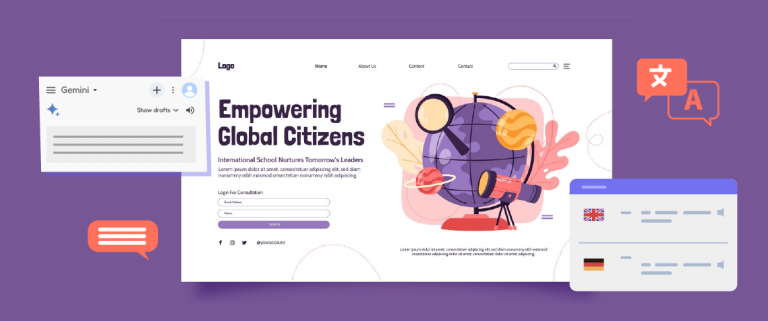Every business wants to connect with audiences worldwide, adapting to personal preferences and local cultural nuances. This can be achieved through localization, the process of tailoring content, products, and services to be more personal and relevant to the audience’s place and culture.
Although localization is important to implement, especially on business websites, many companies still need help to do it correctly.
If you’re also having difficulty achieving successful localization, don’t worry. This article will explore 5+ examples of companies that have succeeded in localization, starting with hospitality businesses, food, games, and many more.
We will also uncover best practice tips to help you develop the right localization strategy for your own business.
Importance localization for your business
Before we delve into further examples of businesses that have successfully localized their websites, let’s first discuss how important website localization is for your business. Here are some benefits you’ll gain.
- Expanding global reach and access to new markets: Localization enables businesses to enter new international markets by adapting their products, services, and marketing to fit the language, culture, and local preferences. This opens up opportunities for revenue growth by reaching previously untapped customer bases worldwide.
- Enhancing customer experience and brand perception: Localization can create a comfortable experience for customers in various regions by tailoring content, user interfaces, and offerings to local customs. Attention to cultural nuances can build trust and loyalty, increasing customer satisfaction and retention.
- Increasing conversion and sales potential: Customers are more likely to engage with and purchase products or services that feel available in their local language. They will be more confident in making purchases. Ultimately, localization can remove linguistic and cultural barriers, enhance user experience, and increase conversion rates in target markets.
- Competitive advantage and brand reputation: In an increasingly globalized market, localization can differentiate businesses from competitors who fail to adapt to local contexts. By demonstrating a commitment to understanding and respecting diverse cultures, companies can enhance their brand reputation, build stronger relationships with international audiences, and position themselves as industry leaders in the global market.
5+ companies that successfully implemented localization
Now that you understand how important localization is and what benefits you can gain from implementing it let’s discuss several company websites that have successfully implemented localization. Let’s dive right in.
Airbnb
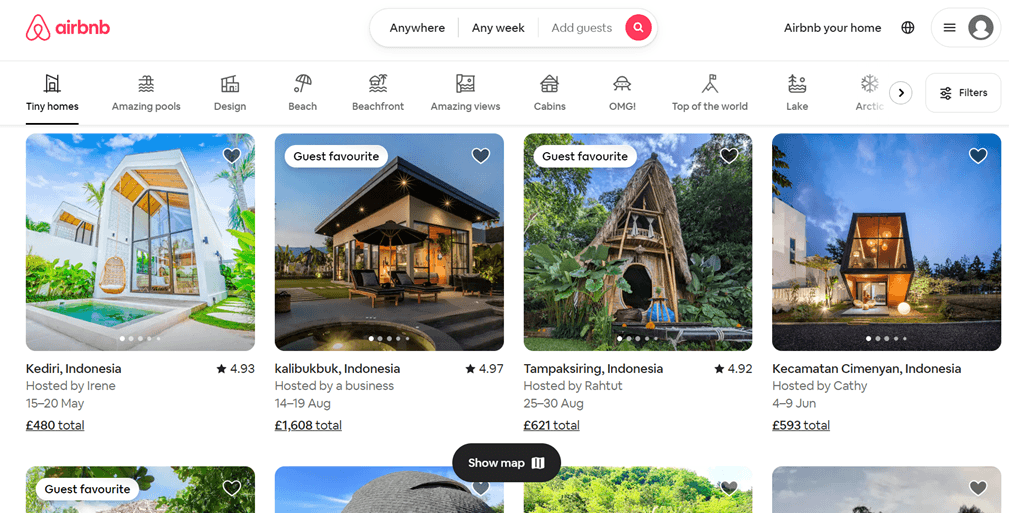
The first example of localization comes from the multilingual website of Airbnb. Targeting audiences from various countries, it heavily leverages localization to drive rapid and successful global expansion. It has expanded to over 220 countries and regions, successfully making localization one of its strategic pillars to provide authentic and personalized experiences for users worldwide.
Beyond translating website into 80+ languages, Airbnb also adapts every aspect of the user experience. This includes adjusting currency, date formats, measurement units, and more according to local preferences. The company also translates user-generated content, such as listings and reviews, incorporating local terms and nuances to maintain cultural authenticity.
Airbnb’s localization efforts go even further, with region-specific local travel guides highlighting must-see attractions and activities. Not only in terms of content localization, but Airbnb also pays attention to design localization, as seen in the consistent layout placement that remains stable even when switching languages. This is highly beneficial for users as it allows them to navigate pages without difficulty.
By prioritizing truly local experiences and adapting to local cultures, Airbnb has successfully built trust, satisfied international users, and emerged as a global leader in the hospitality industry.
Netflix

Netflix is a leading video streaming service provider available in 190 countries around the world. At the core of its strategy is careful content adaptation through high-quality dubbing and subtitling in various languages – considered an integral part of the production process from the outset.
However, Netflix’s localization efforts go far beyond mere language translation. The entire user experience, from personalized interfaces and recommendations to region-based marketing campaigns involving local influencers, is meticulously prepared to create authentic and culturally relevant nuances in each country.
By considering language differences, customer preferences, and cultural norms, Netflix has successfully attracted diverse global audiences, strengthened its position in the industry, and experienced impressive international customer growth. It currently has 269.6 million subscribers worldwide.
WWF
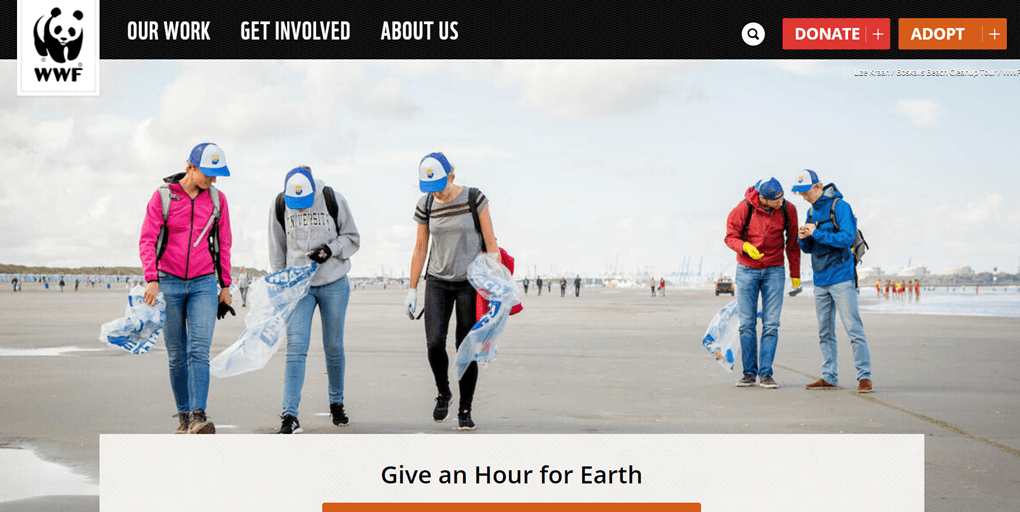
The following example of localization comes from WWF (World Wide Fund for Nature), an international organization focused on nature conservation, protecting wildlife species, and raising awareness about global environmental issues.
Operating in over 100 countries and aiming to protect endangered species and habitats, WWF leverages its website, social media, case studies, news articles, and other localized marketing materials to resonate with and educate the general public worldwide.
Two localization strategies used by WWF are:
- Presenting content to local markets in their native languages – The WWF website is available in over 50 languages, including English, Dutch, French, Portuguese, Hindi, Japanese, Mandarin, and more.
- Providing locally relevant content to the right audience – Regional WWF websites feature news, reports, and campaigns focused on the most important conservation issues for that audience. For example, the U.S. website might highlight the American Wildlife Recovery Act.
This strategic localization approach enables the organization to build more impactful relationships and engagement with diverse global audiences.
ASOS
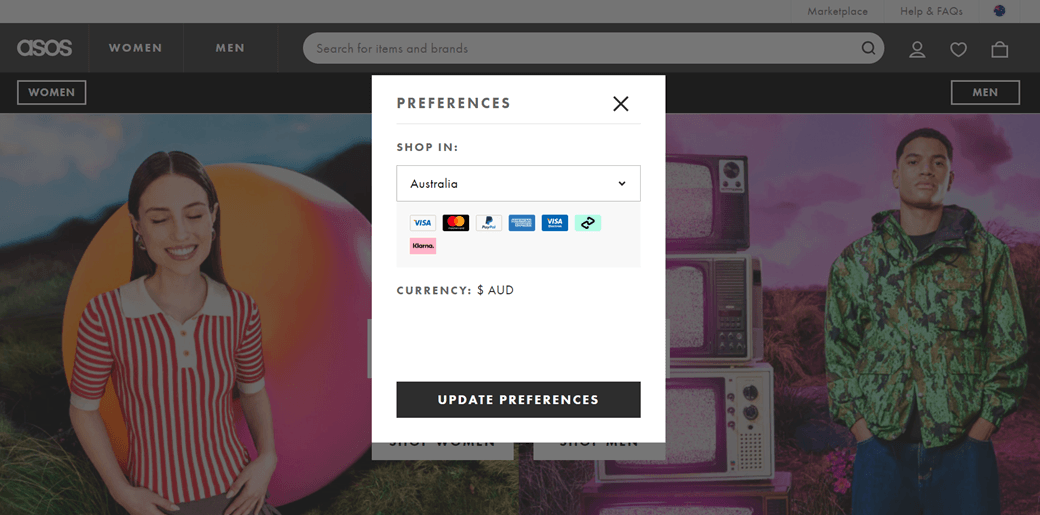
This time, the example comes from the fashion industry, ASOS, which has made localization its primary focus in delivering customized shopping experiences worldwide and has generated over 60% of its revenue from international markets.
In its localization efforts, ASOS has tailored language, currency, size guides, and even fashion trends displayed to match regional preferences. This creates a familiar and locally relevant experience tailored to customers’ needs in each market.
ASOS’s localization efforts also extend to its marketing. It uses customized promotional strategies, such as collaborating with local influencers and adjusting email campaigns around regional events and holidays, to ensure that brand messaging resonates authentically.
Additionally, it provides multilingual support, offers around 10 payment methods that accept over 19 currencies, and optimizes shipping and returns using local logistics operators in key markets.
By considering cultural nuances from product listings to post-purchase, ASOS has successfully built relationships with a global audience and achieved an annual revenue of £3.54 billion in 2023.
Domino’s
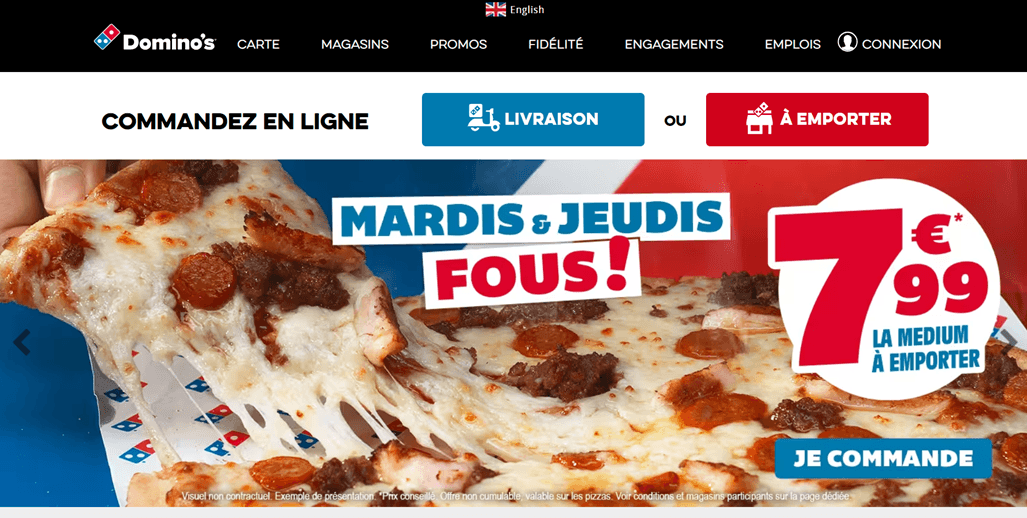
Domino’s is a leading multinational pizza restaurant in over 58 countries. To stay competitive against players like KFC and Subway, Domino’s implements an effective localization strategy by adapting to the preferences of local communities in each market.
In India, Domino’s recognized that Western-style pizza wouldn’t appeal to local customers. Therefore, they launched pizza options tailored to the preferences of Indian society, such as chicken tikka masala and paneer tikka. By serving flavors familiar and suitable to local tastes, Domino’s successfully captivated food enthusiasts in India.
Meanwhile, in Malaysia, Domino’s pays attention to the prohibition of using beef and pork. To comply with this rule, Domino’s ensures that its outlets in Malaysia use all types of ingredients except for pork, beef, and non-halal meats. By adapting its menu and ingredients, Domino’s demonstrates its commitment to respecting the beliefs and culture of Malaysian society.
Currently, Domino’s has spread across various parts of the world, and you can check them out through the Domino’s website. Each country has its website with content tailored to that country’s language.
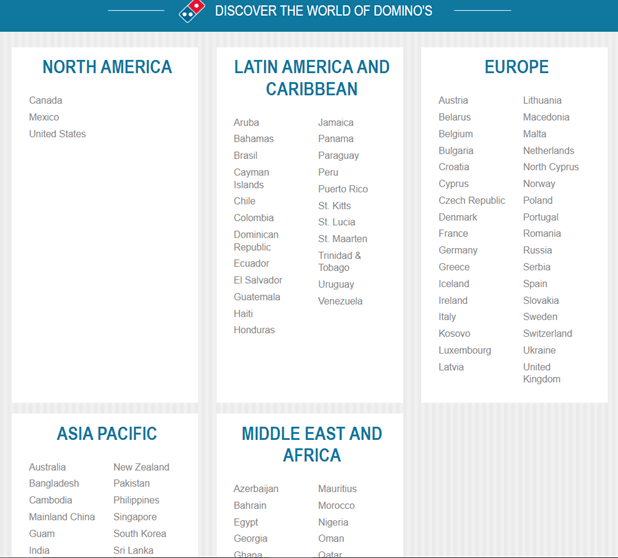
KFC
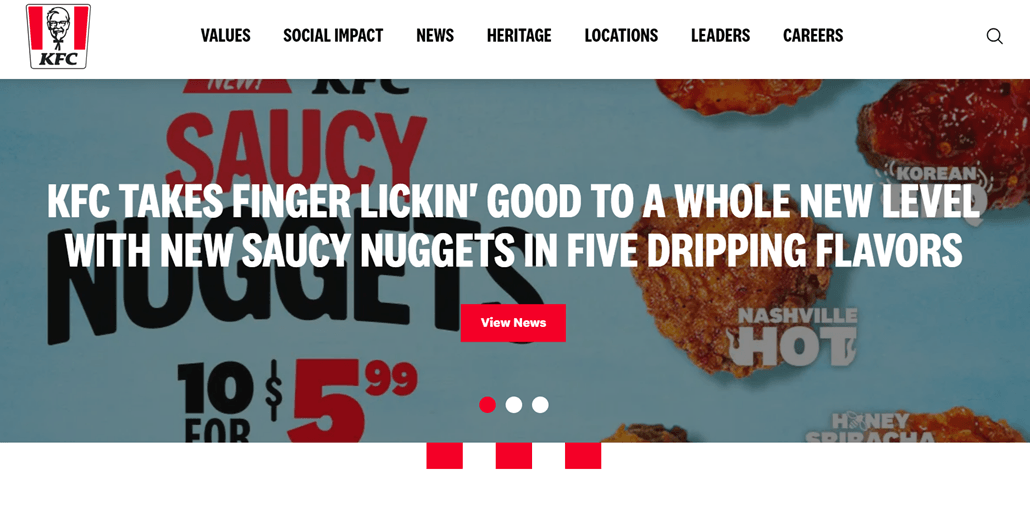
KFC has successfully merged global uniformity with local flavors in the fast-food industry. Thanks to this strategy, KFC has built a strong foundation in various markets worldwide.
At the heart of KFC’s localization strategy is careful menu adaptation. Food preferences vary widely among cultures, and KFC strives hard to cater to local tastes. From introducing the ‘Chizza’ (a combination of Chicken and Pizza) in the Philippines, ‘Spicy Sichuan Chicken’ in China, and ‘Paneer Zinger’ in India, KFC’s localized menu reflects local preferences, making the brand a familiar and inviting place for customers everywhere.
Not only the menu, but KFC also adjusts its marketing campaigns and store designs to fit different cultures. Their advertisements are often localized to reflect the social and cultural nuances of the target markets.
For example, in Japan, where Christmas is considered a romantic holiday rather than a family gathering occasion, KFC launched a successful marketing campaign portraying their chicken as the ideal Christmas Eve dinner!
In addition to adapting menus and marketing campaigns, KFC also involves a local workforce that understands the local culture and language. This helps them communicate effectively with customers and provide services that meet local cultural expectations.
Coca Cola

Coca-Cola is one of the world’s largest multinational beverage companies, selling products in over 200 countries. Recognizing the importance of localization, Coca-Cola translates its website content into various languages and localizes its marketing campaigns to fit local cultures and preferences.
The Coca-Cola website is available in over 40 languages, including most spoken languages in the world like English, Japanese, and also less commonly used languages like Latvian, Lithuanian, Albanian, and Greek. By translating content into local languages, Coca-Cola ensures that its information is accessible and understood by audiences worldwide.
Additionally, each Coke bottle features a different name on the label, providing a more personalized experience for consumers. As part of their localization strategy, Coca-Cola adapts these campaigns for local markets like Ireland. In Ireland, soda bottles have Irish names such as Aoife, Cathal, Gráinne, Áine, and Eimear.
Apart from that, the Coca Cola website also localizes the design, namely the images used. The images used on the Coca-Cola website are also adapted to the customs of each country. For example, their landing page in Korea displays an image of a popular Korean girl band.
This approach reflects the company’s commitment to understanding and appreciating cultural diversity and providing a more relevant experience for its global consumers.
Nintendo
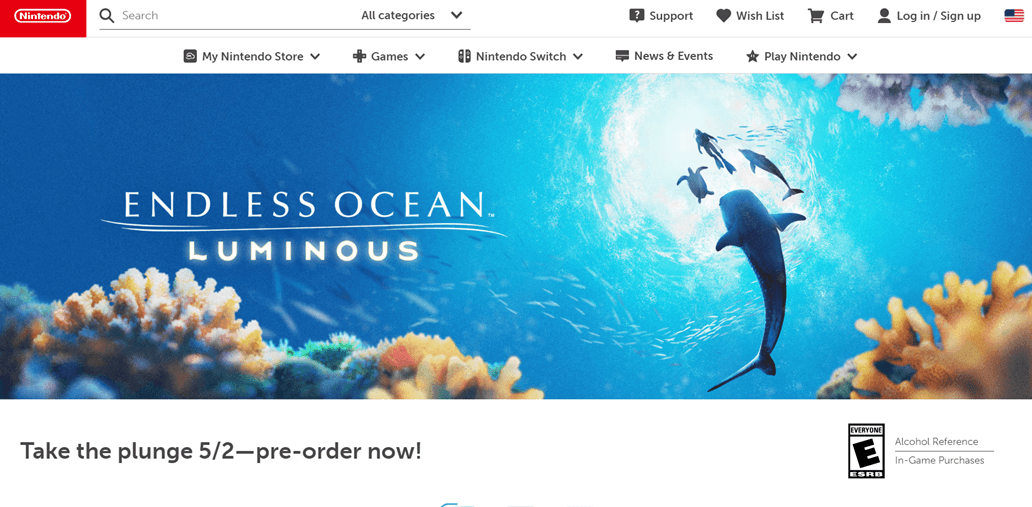
The final example comes from the gaming industry. Nintendo employs a localization strategy beyond mere text translation, modifying cultural references, jokes, and gameplay elements to align with the target culture. Attention to these details creates an authentic gaming experience, allowing all players to connect with it.
Nintendo also involves localization teams from the early stages of the game development process. Discussions and localization planning occur simultaneously with game design and development.
Localization experts translate games, create marketing content and promotional videos, and oversee the game distribution to various regions. By involving this team from the outset, Nintendo can optimize the localization process and make necessary cultural adjustments while still maintaining the integrity and uniqueness of the original game concept.
Best practices for effective localization
After knowing about business localization examples, you need to know about best practices for your website. Here are some of them.
- Understanding the target audience: Understanding the target audience profoundly is the key to successful localization. This involves studying the language and the cultural context, values, social norms, lifestyle preferences, and market trends in the target region. Market research and insights from local experts are essential to gain this rich understanding. By understanding the audience, you can adjust content, design, and marketing strategies more effectively to resonate and be relevant to them genuinely.
- Involving local experts: While professional translators are crucial, involving local experts such as writers, cultural consultants, and market analysts can provide valuable insights that are difficult to obtain from the outside. They have in-depth knowledge of language nuances, idioms, humor, cultural references, and current trends that can help you avoid cultural mistakes that could potentially damage credibility and relationships with the target audience. Input from local experts can also help you adapt content more accurately and compellingly for the market.
- Prioritizing effective localization quality: This involves not just translating word for word but also adapting products, services, and marketing content to fully align with the culture, preferences, and expectations of the target audience. This involves attention to every detail, from translation accuracy to intuitive user interface design and visual elements that align with cultural norms. High quality in all aspects of localization will help bridge cultural gaps and provide a truly local experience for the audience.
- Maintaining consistency: Consistency is key to providing a seamless and integrated experience for the audience across all localized content and channels. This includes consistency in terminology, writing style, branding messages, visual design, and user interface elements. Standardizing styles and using centralized translation databases help maintain this consistency. A consistent experience will enhance credibility and trust in your brand.
- Leveraging translation services: Technology can be a strong supporter of localization efforts. Tools such as automatic translation systems and multi-language SEO optimization software can simplify and automate many aspects of the localization process. This technology can help you manage translation databases, detect content that needs localization, and even optimize your website and marketing content for better rankings and visibility in local search engines.
Start localization of your business using Linguise
Now that you know what localization examples and best practices can be applied, as mentioned above, one of the best practices is to use automatic translation services while optimizing SEO.
One translation service that can be used is Linguise. Linguise translation service offers several outstanding features that assist in the localization process, including the following.
- Automatic detection and translation
- Front-end live editor with other members or translators
- Translation rules for excluding translations
- Image and media translation
- Adding translators and setting up access
The Linguise service can be used in various CMS and web builders, as it is integrated with more than 40+ platforms. You can add over 80+ available languages and translate them quickly.
Linguise’s outstanding features make it easy to localize your website. So, what are you waiting for? Register a free Linguise account to localize your business, increase user satisfaction, and expand your reach to a wider audience.




